Five personally defining moments in Red Sox history

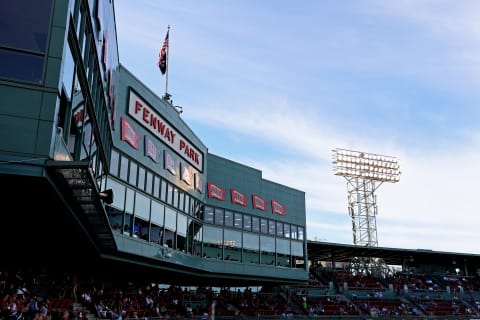
The history of the Boston Red Sox is littered with good and bad memories that have defined the team. Here are my five defining moments.
The Red Sox are not unique in baseball nor in baseball history for unfortunate trades, player disappointments, injuries, and free agency expenditures that went bust. What would Tony Conigliaro have accomplished if that rising fastball nicked his shoulder? Or the medical science of the present could have repaired Smoky Joe Wood’s extraordinary right arm?
The tragic – from the Boston perspective – of selling the most valuable property to the Yankees have altered history with a no sale instead? And it was not just Babe Ruth as the exodus from Boston to New York provided the core of great Yankee teams and the impetus for Yankee dominance for decades.
Should Jeff Bagwell be wearing a Boston beanie in the Baseball Hall of Fame? What would have happened if Dave Stapleton had been inserted for Bill Buckner? If Tim Wakefield’s knuckleball had a bit more bite or the wind was blowing in on Bucky Dent‘s lazy fly ball? Or if Jim Lonborg had four days rest instead of two?
The above all circulate around players. The glory of speculation and the “what if?” that provides an alternate history for the disenchanted, frustrated, and those who wallow in speculation. Does it also go both ways such as what if Dave Roberts‘s historic slide missed the bag? The following is my recollection either via Red Sox’s history or personal experience on defining Red Sox moments that are not necessarily linked to players. They are, however, steeped in the negative with a touch of the positive.
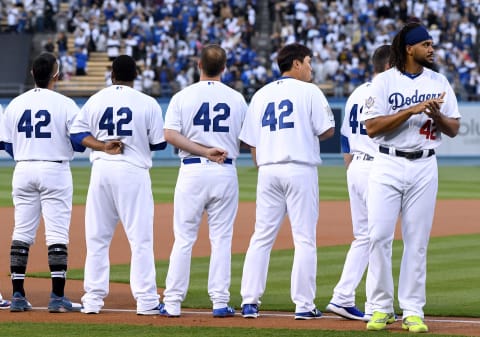
Jackie Robinson tryout
There are barriers such as the four-minute mile that Roger Bannister shattered or the sound barrier surpassed by the incomparable Chuck Yeager. Likewise, baseball has barriers and the most noted one was not statistical but racial. Blacks in the modern era were excluded from playing major league baseball and Boston was an unfortunate party to the exclusion.
The Red Sox were the last franchise to integrate with the arrival of Pumpsie Green for an unremarkable five-year MLB career. But Boston had opportunity wrapped up in a public relations sham. Jackie Robinson could have broken that barrier in Boston.
Media pressure finally had the Red Sox acquiesce and stage a tryout for Robinson and two Negro League stars – Sam Jethroe and Marvin Williams. The players went through their motions and platitudes were distributed by the attending Red Sox scouts and management, but no contracts were offered. The players knew this. Fully aware of the ingrained attitude of certain Red Sox decision-makers, but that is covered here – a very worthy library addition.
How history could have been altered if the Red Sox at least offered a minor league contract to Robinson and the others. Robinson’s history is well-known, but Jethro also had a Boston history that extended beyond a faux tryout.
Jethroe became a 33-year-old rookie outfielder for the Boston Braves and tacked on the American League Rookie of the Year Award to his baseball biography page. I was fortunate enough to see Jethroe play in the first major league game I ever attended at Braves Field.
For Williams, the outcome was far different as Williams never surfaced in the majors. Williams did enjoy an extensive and nomadic career in the minors, Negro Leagues, winter ball, and various other destinations before finishing his career in 1961.

Red Sox refuse to rent Fenway Park to Braves
Do you remember your first time? Age can be cruel by tainting memories or even exaggerating them especially through young eyes that become old eyes. The first time was on a July evening and a night game at Braves Field before just 5,442 fans that included myself and my mother who was gifting me with a school is out reward.
What I do remember is my first impression and that was of a cavernous field and a rather worn field. But the most significant view was our seats in the first row right by the third base side so I can see my favorite player Eddie Mathews up live and personal.
Mathews was just a rookie that season and only 20-years-old so being an only child, maybe it was a big brother thing? Mathews did not disappoint as he hit a home run that was just number seven of a career that would produce 512 and a Hall of Fame career. This was 1952 and the last season for the Braves in Boston, but what if they stayed?
The Braves had triumvirate ownership with Lou Perini as the titular head of the operation. The partnership was based on the mutual interest of baseball and construction and the ownership was dubbed by the ever-creative Boston media “The three steam shovels.” The Braves were a wreck as a team and with a stadium that no longer met the needs of the fans.
Tom Yawkey has reached iconic stature in the Boston area and some are most certainly deserved, but as with the racial issue, there is another one such as greasing the skids for the Braves’ departure to Milwaukee. The Braves had been refused requests to rent Fenway Park – repeated requests – that eventually culminated in the last-minute departure from Boston.
Baseball had franchise stability for fifty years with the last movement being the Baltimore team becoming the New York Highlanders (Yankees) in1903. Yes – the Yankees were not an original American League team! That now changed and set in motion a series of shifts and eventually expansion.
What could have been is questionable? The Braves were on the cusp of a revival with an influx of talent and some shrewd trades that would take place and culminate in a World Series Championship in 1957. There is a distinct possibility that they could have remained in Boston with the Braves and their construction magnates building a new park and invigorating a great rivalry.
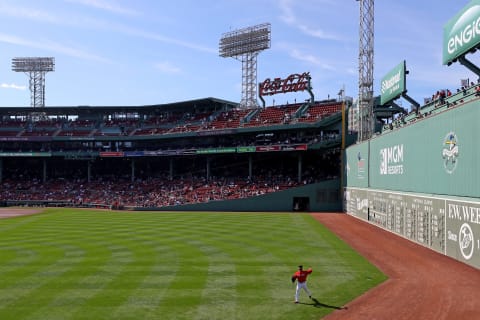
Tom Yawkey buys Red Sox
The first two slides paint an ugly portrait of Tom Yawkey and decisions that based on our perspective are quite questionable, but the reality is Yawkey saved the team. Without Yawkey there would likely be a Red Sox team, but not in Boston. They were dead broke, with a wrecked ballpark, no fans, and a history of baseball cellar-dwelling when a 30-year-old Yawkey inherited his uncle’s wealth.
Yawkey bought the team in 1933 for a paltry $1.25 MM, but this was an age when the country was mired in the Great Depression and baseball was not excluded from the misery. How bad was it for the Red Sox? In 1926 part of the park burned down and was not rebuilt. The team had just finished a 43-111 season that was symptomatic of performances since the team was gutted more than a decade earlier.
Yawkey got to work and the first major construction was not the lineup – that would come later – but the playground. Fenway Park was going to be rebuilt almost from the ground up. In the middle of construction, another fire occurred, but this was Yawkey and Yawkey had something else to burn – money. Double shifts and get the job done.
The new and improved park – if you call those troughs in the men’s room state of the art – needed something on the field. The depression offered opportunities since other notable franchises were wallowing in debt and despair. In trades that were cash payments, Yawkey secured talent and not just any talent. Lefty Grove and Jimmie Foxx came to Boston among others.
The history of Yawkey is notorious as far as using money as a potential panacea for losing. The Red Sox reportedly had the highest payroll, spent lavishly on bonus players, and later dove full force into free agency. If a player had a price tag Yawkey would meet it.
The reinvigorating of the franchise in 1967 after several years of stagnation set in motion a mentality that exists today. The Red Sox invariably – even in their latest cost management phase – remains among the élite in payroll expenditures. The team also has returned to its roots of the early 20th century with Royal Rooters by the millions – all made possible by Yawkey.
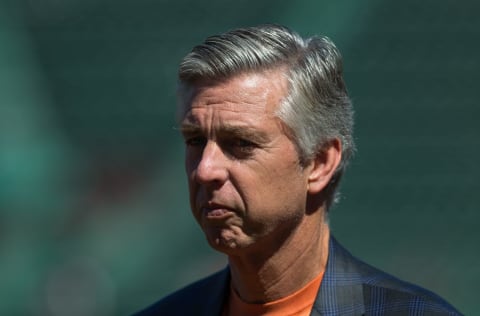
Red Sox bend bonus money rules
Baseball has a rather dark history of questionable actions designed to give a competitive edge. The most recent brouhaha pinned the Astros to an ethical wall with a concerted and well-orchestrated effort to poach the opposition’s signs. The baseball jury is still sifting through the evidence which may also implicate Red Sox manager Alex Cora in the scheme.
The Red Sox bent some other rules and that was manipulation of bonus structure money regulated for the signing of international players. International is best defined by promising and youthful players in the talent-rich Caribbean area. The motivation was rather simple – to get players when the team was restricted from excessive spending.
A little creativity of simply flowing money from lesser prospects to those more valuable. Cheating is not some recent revelation since it is a tried and true tactic in sports and life. Players have routinely dabbled with performance enhancers with management maintaining a blase attitude until forced to respond. This is just another creative level to cut corners.
The Red Sox were nabbed by their sleight of hand attempts and the penalties were appropriately dished out. Contracts were voided, a hiatus from signings for a year was ordered, and a fine dispensed. The Red Sox had placed themselves between this rock and a hard place with the contractual spending to sign Yoan Moncada, but hey – there are ways around everything.
Situations such as this certainly make one question just what type of ethical and moral character the team wishes to present. The actions resulted in significant changes to the lives of several players who were already signed and those pending signing with the Red Sox – collateral damage.
The vice president of international scouting was Eddie Romero and his punishment was swift – they promoted Romero to the assistant general manager once Mike Hazen departed. The entire episode left an indelible smudge on Red Sox baseball operations and certainly leaves questions regarding the extent of who knew what and when?
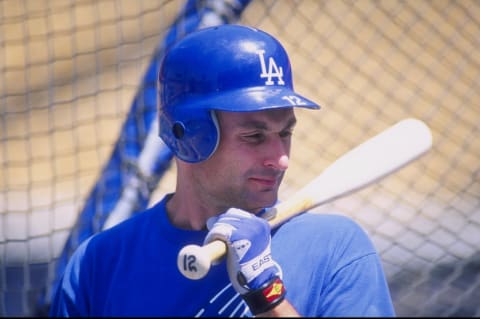
Jim Eisenreich
The bleachers at Fenway Park have been sanitized or is a better term fumigated over the last twenty years. Behaviors covered the bizarre, humorous, vile, and usually fueled with baseball passion and triggered by a large consumption of alcohol. I go far enough back in time to remember sitting on planks and not seats to wonder just when the rowdyism would begin?
Behaviors at sporting events take on a pack mentality or a group dysfunction. The collective mindset that allows sane people to collectively jump the rails and migrate into a land where one-upmanship in stupidity is not only allowed but encouraged.
More from Red Sox History
- Two notable Red Sox anniversaries highlight current organizational failures
- Contemporary Era Committee doesn’t elect any former Red Sox to Hall of Fame
- Johnny Damon calls Red Sox out, reveals hilarious way he skirted Yankees’ grooming policy
- Remembering the best Red Sox Thanksgiving ever
- Red Sox World Series legends headline 2023 Hall of Fame ballot
Repulsiveness had no boundaries as noted in this article regarding an inflated female doll in the bleachers and what transpired. That incident finally caused a stir in Red Sox management to discuss behaviors that had created an environment similar to a sailor’s bar in 1933 Shanghai, but the bottom for me happened in a game against the Twins at Fenway Park in 1982.
Jim Eisenreich played 15 seasons in the majors and hit .290, but Eisenreich also suffered from TSA or Tourette’s Syndrome with the most noticeable visible part of the condition being tics and involuntary movement. Fortunately, Eisenreich never had the condition at-bat, but in the field it was noticeable. For years the condition had been undiagnosed and misdiagnosed, but his story appeared in the Boston Globe before the Twins visit.
During the game, Eisenreich was subjected to chants and insults coupled with fans starting to mimic the tics that Eisenreich displayed with the expected results being accomplished when Eisenreich had to be removed from the game still shaking and hyperventilating.
Next. Red Sox ball on the budget with Chris Mazza signing. dark
I have written about the Eisenreich situation over the years and it remains to be a singular defining moment on collective insensitivity and bad behavior. No one stepped in – fans, security, management – a low point in Red Sox history setting a bar that even a flea could not limbo under.